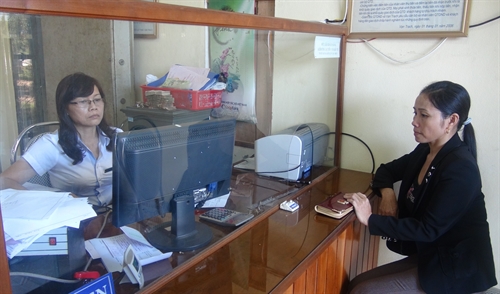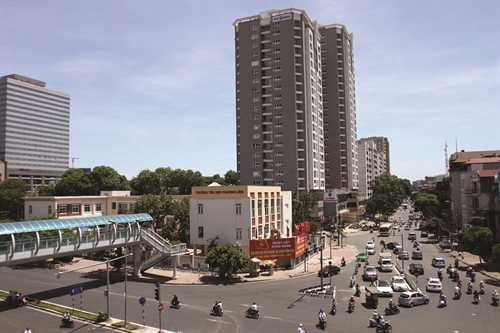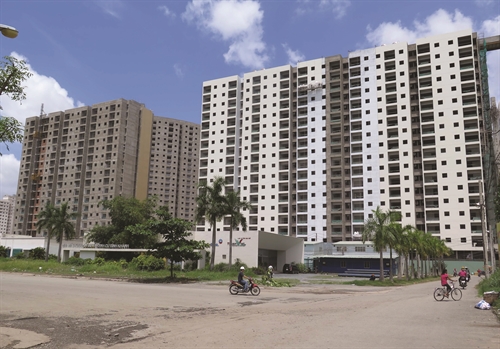Bui Nguyen Cong[1]
In general, pricing policy of a credit institution (which includes interest rate and non-interest income) is based on several factors, such as pricing structure (cost of funds, direct and indirect incomes from credit assets) and pricing principles (pricing according to risk level of each category of clients, credit assets and expected return), and must foster the competitiveness of the credit institution itself. Pricing policy is also under strictly control of relevant laws.
1. Interest rates
Basic principles
Credit institutions and foreign bank branches (credit institutions) and their clients have the right to agree on interest rates. Indeed, pursuant to Article 91.2 of Law on Credit Institutions No. 47/2010/QH12 dated June 16, 2010 (the Law on Credit Institutions), “a credit institution and clients have the right to agree, in accordance with law, on interest rates and fees for extension of credit during the banking operation of the credit institution”.
Article 11.1 of the Regulation on lending by credit institutions to clients issued together with Decision No. 1627/2001/QD-NHNN dated December 31, 2001, as amended in 2002, 2005 and 2011 (Decision 1627) provides: “The loan interest rate shall be agreed by the credit institution and its clients in accordance with the regulations of the State Bank of Vietnam”. This means, while the parties have the right to agree on interest rates, they still have to comply with specific regulations of the State Bank of Vietnam (the SBV) on interest rates (if any). To put in another way, in each period, the SBV might fix several exceptions on interest rates with which credit institutions must comply.
To ensure the consistency and transparency in credit institutions’ calculation of the amount of interest rates that their borrowers have to pay, the third version of the draft Circular to replace Decision 1627 (draft Circular on lending) stipulates that credit institutions must provide accurate, credible information on lending interest rates to clients for them to decide on signing loan agreements, including details on lending interest rates, principles, factors and time of determining interest rates for cases where adjustable rates are applied (Article 9).
For lending in Vietnam dong, credit institutions shall provide loans in Vietnam dong at agreed interest rates to their borrowers in order to meet capital demand of efficient projects, plans for production, business, services, development investment and servicing living conditions (Article 1 of the SBV Governor’s Circular No. 12/2010/TT-NHNN dated April 14, 2010, as amended in 2013, guiding lending in Vietnam dong at agreed interest rates by credit institutions to their clients).
For lending in US dollar, credit institutions determine interest rates on the basis of the interest rate in international market and domestic demand and supply of credit funds in foreign currency (Article 1 of Decision No. 718/2001/QD-NHNN dated May 29, 2001, on the change of operational mechanism of lending interest rates in US dollar of credit institutions for borrowers).
It is noteworthy that pursuant to Article 476.1 of the Civil Code, the interest rate for a loan shall be agreed by the parties but must not exceed 150% of the basic interest rate announced by the SBV for the corresponding type of loan. However, this interest rate cap is understood to apply to property lending relationship between individuals only, but not to lending relationship between credit institutions and their clients.
Exceptions
Lending interest rates might be fixed in legal documents, particularly for several priority sectors and loans for housing development.
Five priority sectors
Pursuant to the SBV Governor’s Circular No. 08/2014/TT-NHNN dated March 17, 2014, regulating interest rates of short-term loans in Vietnam dong provided by credit institutions to clients in need of capital in some economic sectors, and Decision No. 2174/QD-NHNN dated October 28, 2014, guiding some provisions of Circular No. 08/2014/TT-NHNN, the maximum short-term loan interest rate in Vietnam dong, which is 7% per year, applies to the following five priority sectors:
- Serving the development of agriculture and rural areas in accordance with Government Decree No. 41/2010/ND-CP dated April 12, 2010, on credit policies for agriculture and rural development (this Decree was already replaced by Decree No. 55/2015/ND-CP dated July 9, 2015);
- Implementing plans and projects of production and trading of exports in accordance with the Commercial Law;
- Serving production and business operations of small- and medium-sized enterprises in accordance with Government Decree No. 56/2009/ND-CP dated June 30, 2009, on support for the development of small- and medium-sized enterprises;
- Developing support industries in accordance with Prime Minister Decision No. 12/2011/QD-TTg dated February 24, 2011, on policies for the development of a number of support industries;
- Serving production and business operations of hi-tech application enterprises under the Law on High Technology and relevant laws.
Loans for agricultural development
There are several legal documents which have specific provisions on lending interest rates in the agricultural sector.
For instance, according to Government Decree No. 68/2013/ND-CP dated November 14, 2013, on supportive policies on reduction of losses in the agricultural sector, and SBV Governor’s Circular No. 13/2014/TT-NHNN dated April 18, 2014, guiding the implementation of this decree, for loan agreements intended to reduce losses in the agricultural sector granted by commercial banks before December 31, 2020, commercial banks lend at the lowest interest rate applied to the loans serving agriculture and rural areas with the same repayment duration in the same period.
Similarly, under the direction of the Prime Minister in Official Letter No. 1149/TTg-KTN dated August 8, 2012, and SBV Governor in Official Letter No. 8062/NHNN-TD dated October 31, 2014, state-owned commercial banks lend to households, farms, cooperatives and enterprises to develop livestock production, slaughters for frozen meat, pork and poultry meat processing, catfish farming and processing for export at the interest rate of 7% per year.
Furthermore, Government Decree No. 67/2014/ND-CP dated July 7, 2014, on a number of policies on fisheries development, as amended in 2015, and SBV Governor’s Circular No. 22/2014/TT-NHNN dated August 15, 2014, guiding the implementation of this decree, stipulate that a 7% per year interest rate cap shall apply to the loans for building, upgrading boats (within 11 to 16 years) and for supplementing working capital for boat owners who fish and provide fishing logistic services (in the first year[2]).
Loans for housing development
Pursuant to SBV Governor’s Circular No. 11/2013/TT-NHNN dated May 15, 2013, on the provision of loans for housing development, as amended in 2014, the SBV shall determine and announce the interest rate applied for each year, which equals 50% of the average lending interest rate of banks in the market but must not exceed 6% per year.
SBV Governor’s Decision No. 2788/QĐ-NHNN dated December 29, 2014, provides that the interest rate applying to the outstanding balance of loans for housing development in 2015 shall be 5% per year.
It is noteworthy that the above-mentioned interest rate only applies to several low income earners when borrowing at commercial banks of which the State holds more than 50% of charter capital and other banks as indicated by the SBV.
 |
| A local waits to get a loan from a people’s credit fund in Quang Binh province __Photo: Duc Tho/VNA |
2. Overdue interest rates
Article 11.2 of Decision 1627 provides that the overdue interest rate shall be determined by the credit institution and agreed with the client in the loan agreement, but must not exceed 150% of the interest rate applicable during the loan term as agreed or adjusted in the loan agreement.
According to Article 474.5 of the Civil Code: “If a borrower fails to repay, in whole or in part, a loan with interest, the borrower must pay interest on the principal and overdue interest at the basic rate announced by the SBV as at the date on which payment is made”. This provision is not reasonable because in common sense, overdue interest rates should be higher than interest rates applicable during the loan term. Determining overdue interest rates at the basic interest rate announced by the SBV might encourage debtors to delay making repayments, especially in the periods when market interest rate is far higher than the basic interest rate. Since Decision 1627 is a specialized legal document, it has priority over other legal documents. Therefore, in trial practices, judges usually accept the overdue interest rate as agreed between credit institutions and their borrowers in the loan agreement, provided that this rate does not exceed 150% of the interest rate applicable during the loan term.
The basis on which the overdue interest is calculated is also worth mentioning. Since Article 11.2 of Decision 1627 fails to clearly provide, credit institutions have been calculating overdue interest in different ways. While a number of credit institutions apply the overdue interest rate to the actual overdue principal balance only, others also apply it to the principal balance which is not overdue yet but classified as overdue in accordance with Article 13.2 of Decision 1627. This has caused negative reactions from clients and is not supported by law practitioners when there are disputes between the parties.
Article 9 of draft Circular on lending provides that: “the interest rate applied to the actual overdue principal balance shall be agreed upon by the credit institution and its clients but must not exceed 150% of the interest rate applied right before that principal balance turns overdue”. Thus, this provision only recognizes the application of overdue interest rate to the part of principal which is actually overdue.
3. Penalties for breach
Pursuant to Article 13.2 of Decision 1627, late repayment penalties imposed on overdue debts and loan interests shall be agreed upon by two parties on the basis of provisions of applicable laws.
Article 20 of draft Circular on lending provides: “Credit institutions and clients have the right to agree on penalties in accordance with law in cases clients fail to pay the interest on time, or the parties breach the agreed terms of lending agreements”. This provision distinguishes the penalties imposed on overdue interest and penalties in cases the parties fail to comply with the agreed contents of lending agreements (this is understood to include penalties imposed on overdue principal). The approach of draft Circular on lending seems to be more flexible, but is also more likely to expose borrowers to different penalties at the same time due to breaches of lending agreements.
It is noticeable that both above-mentioned provisions refer to the application of the general law on penalties for breach.
Article 422 of the Civil Code allows the parties to agree on the level of penalties for breach. However, under Articles 300 and 301 of the Commercial Law, the level of penalty for any breach of a contractual obligation or the total amount of penalties for multiple breaches shall be agreed by the parties in the contract, but must not exceed 8% of the value of the contractual obligation which is the subject of the breach. This means only if obligations in lending agreements can be valued in terms of money, will the level of penalty be determined. In other words, when the Commercial Law is applied (for example, when the borrower is a trader), the penalties only apply to the overdue principal and interest only.
It is noteworthy that in practice, courts do not have a consistent approach on penalties on the grounds that the law is not clear enough and, therefore, usually excludes these violations caused by late payment as a result of lending agreement disputes.
4. Fees related to loans
According to Article 1 of SBV Governor’s Circular No. 05/2011/TT-NHNN dated March 10, 2011, regulating the fees related to loans of credit institutions to borrowers, credit institutions are not allowed to collect any fees related to loans, except for the following:
- Fee paid for early repayment of loans before the due date by clients and fee paid for contingent credit lines prescribed by the SBV’s regulations on lending by credit institutions to their clients.
- Fee for arrangements to sign co-financing agreements in the form of syndicated loans between credit institutions participating in syndicated loans and their clients in accordance with the SBV’s regulations on co-financing by credit institutions.
- Other fees related to loans specified in the legal documents.
Therefore, it is evident that no fee other than the above should be provided in lending agreements. However, in reality, this regulation is not always strictly complied with by credit institutions, especially when borrowers have little knowledge about banking laws.
From the above analysis, it can be seen that basically credit institutions and clients have the right to agree on interest rates. The law only regulates the cap of interest rates in some cases to protect the rights of borrowers or encourage investment, production and business in particular sectors. This is consistent with monetary-trading nature and operational autonomy of credit institutions in accordance with Article 7 of the Law on Credit Institutions.-
Credit Policy Department (head office)
Joint Stock Commercial Bank for Foreign Trade of Vietnam









